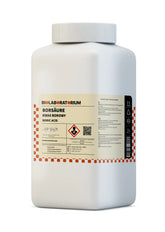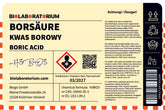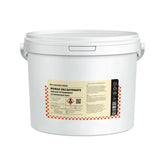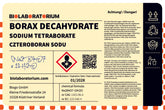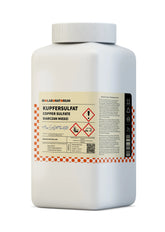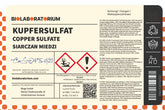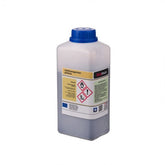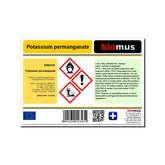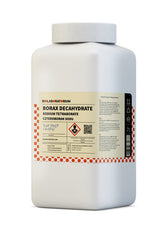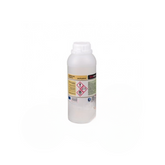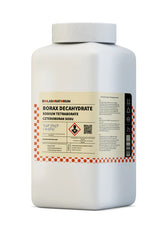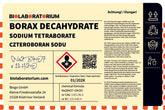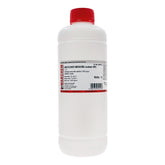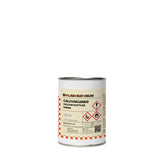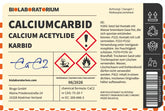The versatile properties and applications of agar
Agar is a fascinating natural product used in a variety of applications. This polysaccharide, derived from red seaweed, has a unique structure and composition that makes it a valuable material in science, industry, and even in the household. In this blog post, we will take an in-depth look at the properties and technical applications of agar.
The origin and extraction of agar
Agar is a product obtained from certain red algae of the genera Gelidium and Gracilaria. These algae are mainly found in the coastal regions of East Asia, South America, and South Africa. The extraction process is relatively simple: the algae are harvested, dried, and then processed in a multi-step procedure to extract the pure agar polysaccharide.
Agar is distinguished by its unique gelling ability. When a hot agar solution cools, a firm, elastic gel forms that becomes liquid again when heated. This reversible gelling behavior is what makes agar such a versatile and useful material.
Chemical structure and properties of agar
Agar mainly consists of two components: agarose and agaropectin. Agarose is the main component and responsible for gel formation. Agaropectin, on the other hand, is responsible for the viscosity and texture of agar.
The chemical structure of agar can be described as a linear polysaccharide composed of repeating disaccharide units. These units consist of D-galactose and 3,6-anhydro-L-galactose. This special structure allows agar to melt when heated and form a stable gel when cooled.
In addition to its gelling ability, agar is also characterized by the following properties:
- Thermoreversibility: The agar gel melts when heated and solidifies again when cooled.
- High viscosity: Agar solutions have a very high viscosity, which can be controlled by concentration and temperature.
- Stability: Agar gels are very stable and resist mechanical stress well.
- Transparency: Agar gels are clear and transparent, making them attractive for many applications.
- Neutrality: Agar is chemically neutral and does not affect the pH value.
- Biodegradability: Agar is a natural polysaccharide and can be biologically degraded.
Technical applications of agar
Due to its unique properties, agar is used in a variety of application areas. Here are some of the most important fields of use:
Microbiology and biotechnology
In microbiology, agar is an indispensable component of nutrient media. Its gel-forming ability allows the production of solid culture media on which bacteria, fungi, and other microorganisms can be cultivated. Agar nutrient media provide microbes with a stable matrix in which they can grow and multiply.
Furthermore, agar is also used in cell culture and biotechnology, for example, for the production of cell culture media or as a carrier material for enzymes and other biocatalysts.
Food industry
In the food industry, agar is used in many ways. It serves as a gelling agent, thickener, and stabilizer in a variety of products such as jams, jellies, desserts, baked goods, and even meat products. Agar is characterized by its temperature stability and ability to form firm yet elastic structures.
Pharmacy and cosmetics
Agar is also an important excipient in pharmacy and cosmetics. For example, it is used in tablets, capsules, and ointments to achieve the desired consistency and release kinetics. Additionally, it is used in creams, gels, and other cosmetic products as a thickener and stabilizer.
Analytics and research
In laboratories and research institutions, agar is used in many ways. Besides its role in microbiology applications, it also serves as a carrier material for electrophoresis gels, in which biomolecules such as proteins or nucleic acids can be separated. Agar also plays an important role as a stationary phase in chromatography.
Further applications
Furthermore, agar is used in a number of other applications, such as in the textile industry, in the production of artist's paints, or as a thickening agent in pet food.
Safety and handling of agar
Agar is a natural, non-toxic product that is considered safe in most applications. Nevertheless, some precautions should be observed when handling it:
- Agar powder can generate dust when handled, which can be inhaled. Therefore, work should be done in well-ventilated rooms and with respiratory protection.
- Hot agar solutions can cause burns. Caution is advised when handling hot agar products.
- Agar waste can generally be disposed of with regular household waste, as it is a biodegradable material.
Overall, agar is a safe and environmentally friendly natural product that provides valuable services in many areas. Due to its unique properties, it has established itself as an indispensable material in science, industry, and household.

